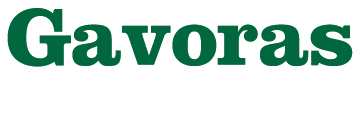Up until now, I have been focusing on wine, in one variation or another, for our monthly beverage feature. October seemed like an appropriate time to expand “Drink, Drank, Drunk” and explore, if you will pardon the pun, the Spirit world. In the beverage industry, Spirits are distinguished from other types of liquor by the fact that no additional sugar is used in the distillation process. Why the ethereal moniker though? Apparently, before science explained away much of the magic and mystery of things, it was believed that hang-overs were caused by evil spirits residing in the cup of the consumer. This is also the origin of the tradition of clinking glasses as part of a toast. It was believed to be beneficial to knock those malignant spirits out of your cup. While bashing your drinking horn or tankard against your dining board may have been acceptable for rough heathens, with the onset of finer society and drinking vessels, the more genteel practice of merely clinking glass or crystal replaced the brutish practices of old.
Many of the great horror stories in literature were penned towards the end of the 19th century. One truly ghastly story was not fiction, however. During this time, European vineyards were ravished by an aphid like insect known as phylloxera. This pestilence nearly wiped out the vitis vinifera of France especially. In less than two decades, France’s production of wine was cut by three quarters. Some estimate that as much as two-thirds of European vineyards as a whole were destroyed by this plague, leaving a huge void in consumer availability of wine. People sought out suitable substitutes for the absent fruit of the vine. One such substitute that skyrocketed to popularity during this time was Absinthe. Not unlike the monsters portrayed in the gothic fiction of the same era, Absinthe was misunderstood, much maligned, and believed to be far more dangerous than it actually ever was.
Botanicals including Anise, Sweet Fennel, Angelica, Peppermint, and most notoriously Grand Wormwood are macerated and steeped in a neutral spirit for up to two days. This is followed by a secondary maceration stage where typically Hyssop, Melissa, and Petite Wormwood are added and warmed. This process lends unique botanical flavors, as well as the infamous green tint that earned Absinthe it’s nickname, La Fe Verte, or The Green Fairy.
For many years, it was commonly believed that the Wormwood in Absinthe was hallucinogenic, or at the very least, narcotic. As it turns out, this is a fallacy, and has been debunked in a fairly recent article in the Scientific Journal. In order to maintain the chemical structure of the naturally occurring chlorophyll, which is the true source of that green tint, the Spirit must be at least 60% ABV. This high alcohol content, perhaps coupled with the fact that consumers of Absinthe were known to dose their beverage with a laudanum soaked sugar cube, was the true source of the trippy reputation Absinthe received.
Absinthe developed such notoriety during its peak of popularity during the Victorian era, that its production and distribution was banned in most of Europe in 1915. This ban was only lifted by the EU in 1988. In the United States, Prohibition swept the legal distribution of Absinthe out the proverbial door along with all other alcoholic beverages in 1920. However, when the Volstead Act was effectively repealed in December of 1933, Absinthe remained banned. The ban on Absinthe was not lifted in the States until as recently as 2007, when the French brand Lucid obtained a COLA (or Certificate of Label Approval) allowing it to be the first genuine Absinthe to be marketed in this country in almost a century.
“After the first glass you see things as you wish they were. After the second glass you see things as they are not. Finally, you see things as they really are, and that is the most horrible thing in the world.” Oscar Wilde is here describing his (apparently vast) experience with Absinthe. As often happens during particularly conservative times, there develops a counter-culture of artists and free-thinkers. This was the case during the notoriously buttoned-up Victorian Age. Due partially to the shortage of wine available, artists, authors, and other socialites turned to other forms of intoxicants. People who were seeking altered states of reality to expand their minds, and stimulate their muse, would do things like chase the dragon or court La Fe Verte, often combining the two. These trips into altered states by authors such as Bram Stoker, Mary Shelley, Edgar Allen Poe, and the above quoted Oscar Wilde, resulted in some of the greatest gothic horror literature of all time. Monsters like Dracula and Frankenstein that have haunted our collective imagination for generations were quite likely the result of Absinthe soaked, opium induced hallucinations.
Absinthe has been scientifically proven to be no more dangerous than other high octane Spirits. Perhaps due to the dark, romantic, and forbidden aspects of it’s consumption as portrayed by famous (and infamous) consumers in art and literature, the mystique surrounding Absinthe yet remains.
